Trajectory and Resource Optimization in Energy-Efficient 3D Coverage of Unmanned Aerial Vehicle
-
摘要: “泛在覆盖”将成为6G的主流网络形式,完成在高山、丘陵、沙漠等网络盲区的通信部署,实现全域无线覆盖,但在远区大规模部署地面基站较为困难。为此,该文将无人机(UAV)通信与非正交多址接入(NOMA)相结合,提出一种高能效立体覆盖方案最大化网络吞吐量能效。首先,建立系统模型,基于K-Means算法与Gale-Shapley算法提出用户配对方案。其次,在用户配对完成后,将初始问题拆分为两个优化子问题并分别转化为凸。最后,利用块坐标上升法交替优化无人机轨迹和发射功率最大化能量效率。仿真结果表明,相较于其它基准方案,该文方案可以显著提高大规模无线覆盖下空地网络的吞吐量能效。Abstract: Ubiquitous coverage will become the main form of 6G networks, and complete the deployment in the mountains, hills, deserts and other blind area, to achieve full-area wireless coverage. However, the large-scale deployment of terrestrial base stations in remote areas is extremely difficult. For this reason, combining Unmanned Aerial Vehicle (UAV) communications with Non-Orthogonal Multiple Access (NOMA) technology, an energy-efficient three-dimensional coverage scheme to maximize the energy efficiency of network throughput is proposed in this paper. First, the system model is established and a user pairing algorithm is proposed based on the K-Means algorithm and the Gale-Shapley algorithm. Then, after user pairing is completed, the initial problem is split into two optimization subproblems, which are transformed to convex respectively. Finally, the block coordinate ascent method is used to alternately optimize the UAV trajectory and transmit power to maximize the energy efficiency. Simulation results show that compared with benchmarks, the proposed scheme can significantly improve the throughput energy efficiency of air-ground networks under large-scale wireless coverage.
-
1 用户配对算法
(1) 输入wk, k $\in {\mathcal{K}}$。 (2) 从地面用户坐标中随机选取2个作为初始聚类中心:{μ1, μ2}。 (3) 初始化用户簇:Ct, t$\in ${1,2}。 (4) repeat (5) for i in ${\mathcal{K}} $ do (6) for j = 1 to 2 do (7) 计算wi与μj之间的距离${d_{i,j}} \triangleq \left\| {{{\boldsymbol{w}}_i} - {{\boldsymbol{\mu}} _j}} \right\|$。 (8) end for (9) 定义${\lambda _i} = \arg \mathop {\min }\limits_j {d_{i,j}}$。更新${\mathcal{C}_{{\lambda _i}}} = {\mathcal{C}_{{\lambda _i}}} \cup \left\{ {{u_i}} \right\}$。 (10) end for (11) for j = 1 to 2 do (12) 更新聚类中心:${{\boldsymbol{\mu}} _j} = \sum\nolimits_{{u_i} \in {\mathcal{C}_j}} {{{{{\boldsymbol{w}}_i}} \mathord{\left/ {\vphantom {{{{\boldsymbol{w}}_i}} {|{\mathcal{C}_j}|}}} \right. } {|{\mathcal{C}_j}|}}} $。 (13) end for (14) until聚类中心不发生变化。 (15) while |$\mathcal{C}_1 $|≠|$\mathcal{C}_2 $| do (16) if |$\mathcal{C}_1 $|>|$\mathcal{C}_2 $| then (17) 定义$\tau = \arg \mathop {\min }\limits_i {{{d_{i,1}}} \mathord{\left/ {\vphantom {{{d_{i,1}}} {{d_{i,2}}}}} \right. } {{d_{i,2}}}}$,更新
${\mathcal{C}_1} = {\mathcal{C}_1}\backslash \{ {u_\tau }\} ,{\mathcal{C}_2} = {\mathcal{C}_2} \cup \{ {u_\tau }\} $。(18) else if |$\mathcal{C}_1 $|<|$\mathcal{C}_2 $| then (19) 定义$\tau = \arg \mathop {\min }\limits_i {{{d_{i,2}}} \mathord{\left/ {\vphantom {{{d_{i,2}}} {{d_{i,1}}}}} \right. } {{d_{i,1}}}}$,更新
${\mathcal{C}_2} = {\mathcal{C}_2}\backslash \{ {u_\tau }\} ,{\mathcal{C}_1} = {\mathcal{C}_1} \cup \{ {u_\tau }\} $。(20) end if (21) end while (22) while $\exists \;{u_x} \in {\mathcal{C}_1},$ ux没有配对且未向${\mathcal{C}_2}$中的所有用户请求配
对do(23) uy←$\mathcal{C}_2 $中没有被${u_x}$请求配对过且距离其最远的用户。 (24) if uy未配对 then (25) 令ux和uy配对。 (26) else if ux和uy的距离相较于uy现有的配对用户uz更远 then (27) 取消uy和uz的配对,令ux和uy配对。 (28) else (29) uy拒绝ux的请求。 (30) end if (31) end while (32) 输出用户配对。 2 能效最大化资源分配算法
(1) 通过算法1确定用户配对。 (2) 初始化i←0,Q[i], P[i], $\mu $和误差容限e。 (3) repeat (4) i←i+1。 (5) 代入Q[i–1],$\mu $解决问题(P4),得到最优解Q*,更新
Q[i]←Q*。(6) 代入P [i–1]解决问题(P6),得到最优解P*,更新P[i]←P*。 (7) 更新
$ {\boldsymbol{\mu}} = \dfrac{{\displaystyle\sum\limits_{m = 1}^M {\displaystyle\sum\limits_{n = 1}^N {\left( {R_m^{\text{s}}[n] + R_m^{\text{w}}[n]} \right)} } }}{{\displaystyle\sum\limits_{n = 1}^N {\left( {{P_{\max }} + {P_{{\text{Base}}}} + {{\text{c}}_1}{{\left\| {{\boldsymbol{v}}[n]} \right\|}^3} + \dfrac{{{{\text{c}}_2}}}{{\left\| {{\boldsymbol{v}}[n]} \right\|}}\left( {1 + \dfrac{{{{\left\| {{\boldsymbol{a}}[n]} \right\|}^2}}}{{{{\text{g}}^2}}}} \right)} \right)} }} $。(8) 计算第i次迭代中(P1)目标函数值obj[i]。 (9) until |obj[i]–obj[i–1]| <e。 (10) 输出Q, P。 -
[1] ZHOU Di, SHENG Min, LI Jiandong, et al. Aerospace integrated networks innovation for empowering 6G: A survey and future challenges[J]. IEEE Communications Surveys & Tutorials, 2023, 25(2): 975–1019. doi: 10.1109/COMST.2023.3245614. [2] 陈新颖, 盛敏, 李博, 等. 面向6G的无人机通信综述[J]. 电子与信息学报, 2022, 44(3): 781–789. doi: 10.11999/JEIT210789.CHEN Xinying, SHENG Min, LI Bo, et al. Survey on unmanned aerial vehicle communications for 6G[J]. Journal of Electronics & Information Technology, 2022, 44(3): 781–789. doi: 10.11999/JEIT210789. [3] 许文俊, 张天魁, 赵楠, 等. 无人机通信[M]. 北京: 电子工业出版社, 2023.XU Wenjun, ZHANG Tiankui, ZHAO Nan, et al. Unmanned Aerial Vehicle Communications[M]. 1st edition, Beijing: Electronic Industry Press, 2023. [4] AKYILDIZ I F, KAK A, and NIE Shuai. 6G and beyond: The future of wireless communications systems[J]. IEEE Access, 2020, 8: 133995–134030. doi: 10.1109/ACCESS.2020.3010896. [5] ZHANG Jun, LIANG Fengzhu, LI Bin, et al. Placement optimization of caching UAV-assisted mobile relay maritime communication[J]. China Communications, 2020, 17(8): 209–219. doi: 10.23919/JCC.2020.08.017. [6] NGUYEN M D, LE Longbao, and GIRARD A. UAV placement and resource allocation for intelligent reflecting surface assisted UAV-based wireless networks[J]. IEEE Communications Letters, 2022, 26(5): 1106–1110. doi: 10.1109/LCOMM.2022.3149467. [7] LUO Jingjing, SONG Jialun, ZHENG Fuchun, et al. User-centric UAV deployment and content placement in cache-enabled multi-UAV networks[J]. IEEE Transactions on Vehicular Technology, 2022, 71(5): 5656–5660. doi: 10.1109/TVT.2022.3152246. [8] WU Qingqing, ZENG Yong, and ZHANG Rui. Joint trajectory and communication design for multi-UAV enabled wireless networks[J]. IEEE Transactions on Wireless Communications, 2018, 17(3): 2109–2121. doi: 10.1109/TWC.2017.2789293. [9] ZHANG Guangchi, WU Qingqing, CUI Miao, et al. Securing UAV communications via joint trajectory and power control[J]. IEEE Transactions on Wireless Communications, 2019, 18(2): 1376–1389. doi: 10.1109/TWC.2019.2892461. [10] WANG Tianhao, PANG Xiaowei, TANG Jie, et al. Time and energy efficient data collection via UAV[J]. Science China Information Sciences, 2022, 65(8): 182302. doi: 10.1007/s11432-021-3343-7. [11] CHEN Zhiyong, DING Zhiguo, DAI Xuchu, et al. An optimization perspective of the superiority of NOMA compared to conventional OMA[J]. IEEE Transactions on Signal Processing, 2017, 65(19): 5191–5202. doi: 10.1109/TSP.2017.2725223. [12] YUE Xinwei, QIN Zhijin, LIU Yuanwei, et al. A unified framework for non-orthogonal multiple access[J]. IEEE Transactions on Communications, 2018, 66(11): 5346–5359. doi: 10.1109/TCOMM.2018.2842217. [13] CHANG Zheng, LEI Lei, ZHANG Huaqing, et al. Energy-efficient and secure resource allocation for multiple-antenna NOMA with wireless power transfer[J]. IEEE Transactions on Green Communications and Networking, 2018, 2(4): 1059–1071. doi: 10.1109/TGCN.2018.2851603. [14] LIANG Wei, DING Zhiguo, LI Yonghui, et al. User pairing for downlink non-orthogonal multiple access networks using matching algorithm[J]. IEEE Transactions on Communications, 2017, 65(12): 5319–5332. doi: 10.1109/TCOMM.2017.2744640. [15] CHEN Xiang, GONG Fengkui, LI Guo, et al. User pairing and pair scheduling in massive MIMO-NOMA systems[J]. IEEE Communications Letters, 2018, 22(4): 788–791. doi: 10.1109/LCOMM.2017.2776206. [16] PANG Xiaowei, TANG Jie, ZHAO Nan et al. Energy-efficient design for mmWave-enabled NOMA-UAV networks[J]. Science China Information Sciences, 2021, 64(4): 140303. doi: 10.1007/s11432-020-2985-8. [17] FENG Wanmei, TANG Jie, ZHAO Nan, et al. NOMA-based UAV-aided networks for emergency communications[J]. China Communications, 2020, 17(11): 54–66. doi: 10.23919/JCC.2020.11.005. [18] LI Yanxin, WANG Wei, LIU Mingqian, et al. Joint trajectory and power optimization for jamming-aided NOMA-UAV secure networks[J]. IEEE Systems Journal, 2023, 17(1): 732–743. doi: 10.1109/JSYST.2022.3155786. [19] TONG Yuqiao, SHENG Min, LIU Junyu, et al. Energy-efficient UAV-NOMA aided wireless coverage with massive connections[J]. Science China Information Sciences, 2023, 66(12): 222303. doi: 10.1007/s11432-023-3821-3. [20] AL-HOURANI A, KANDEEPAN S, and LARDNER S. Optimal LAP altitude for maximum coverage[J]. IEEE Wireless Communications Letters, 2014, 3(6): 569–572. doi: 10.1109/LWC.2014.2342736. -





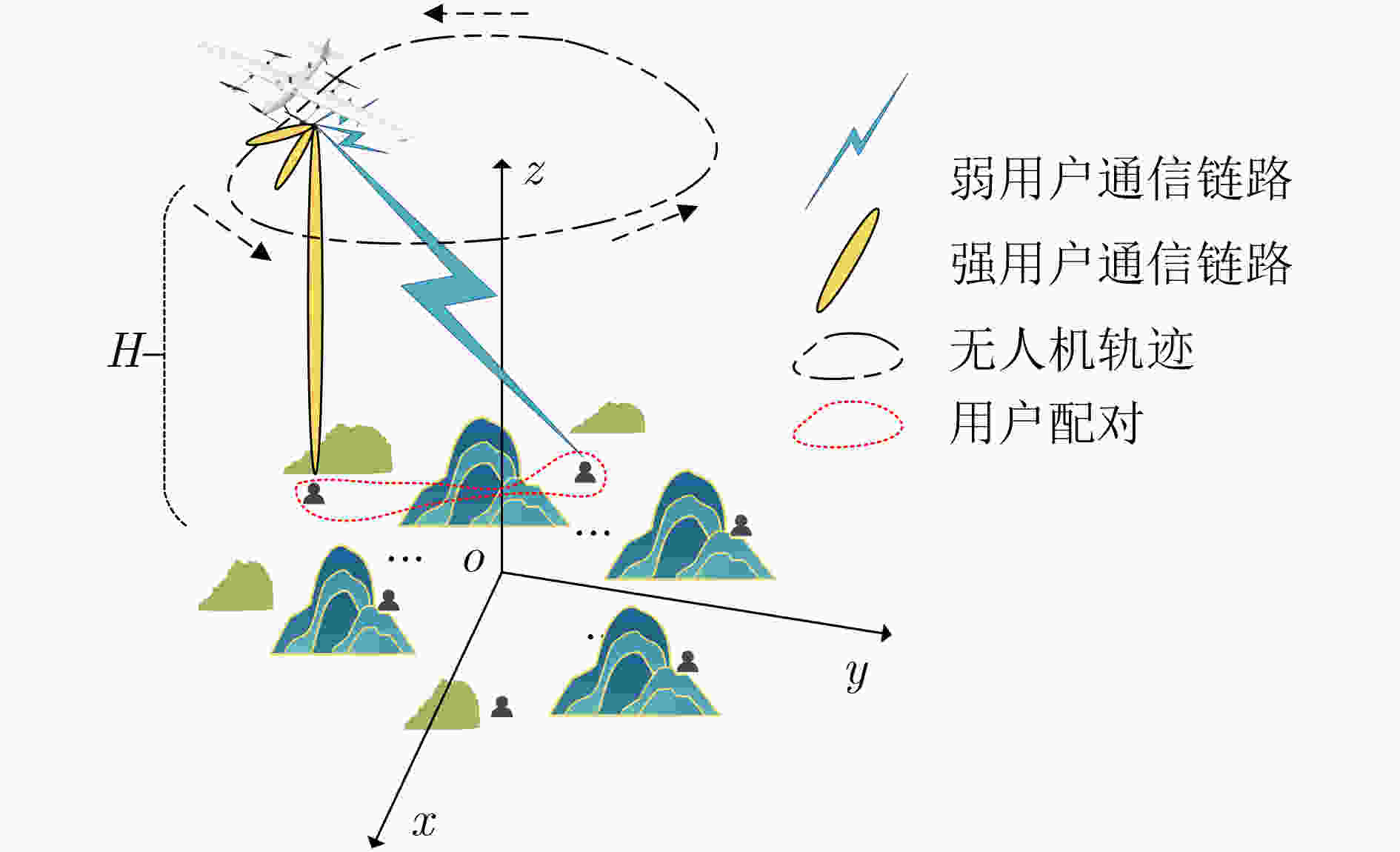
 下载:
下载:
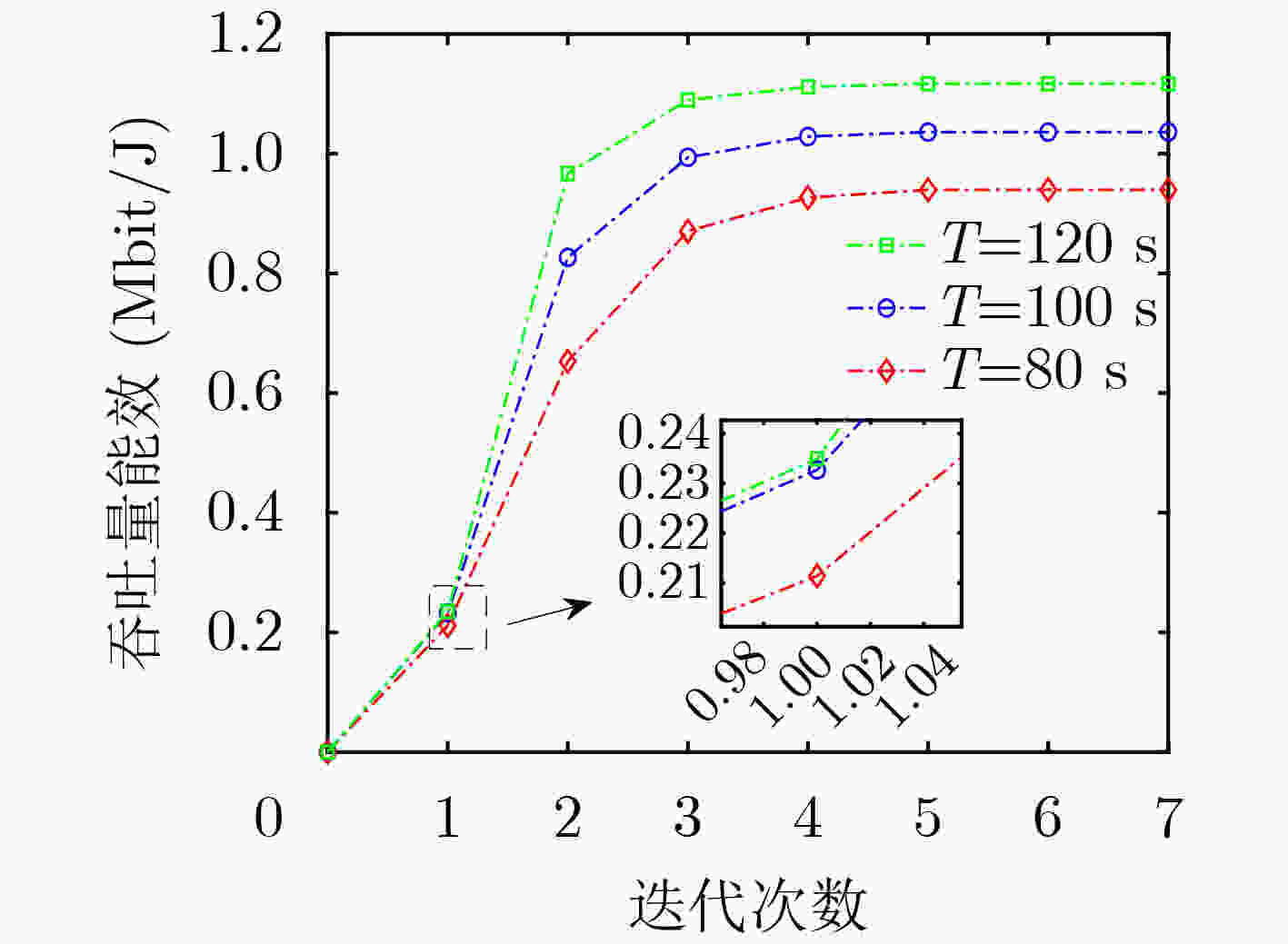
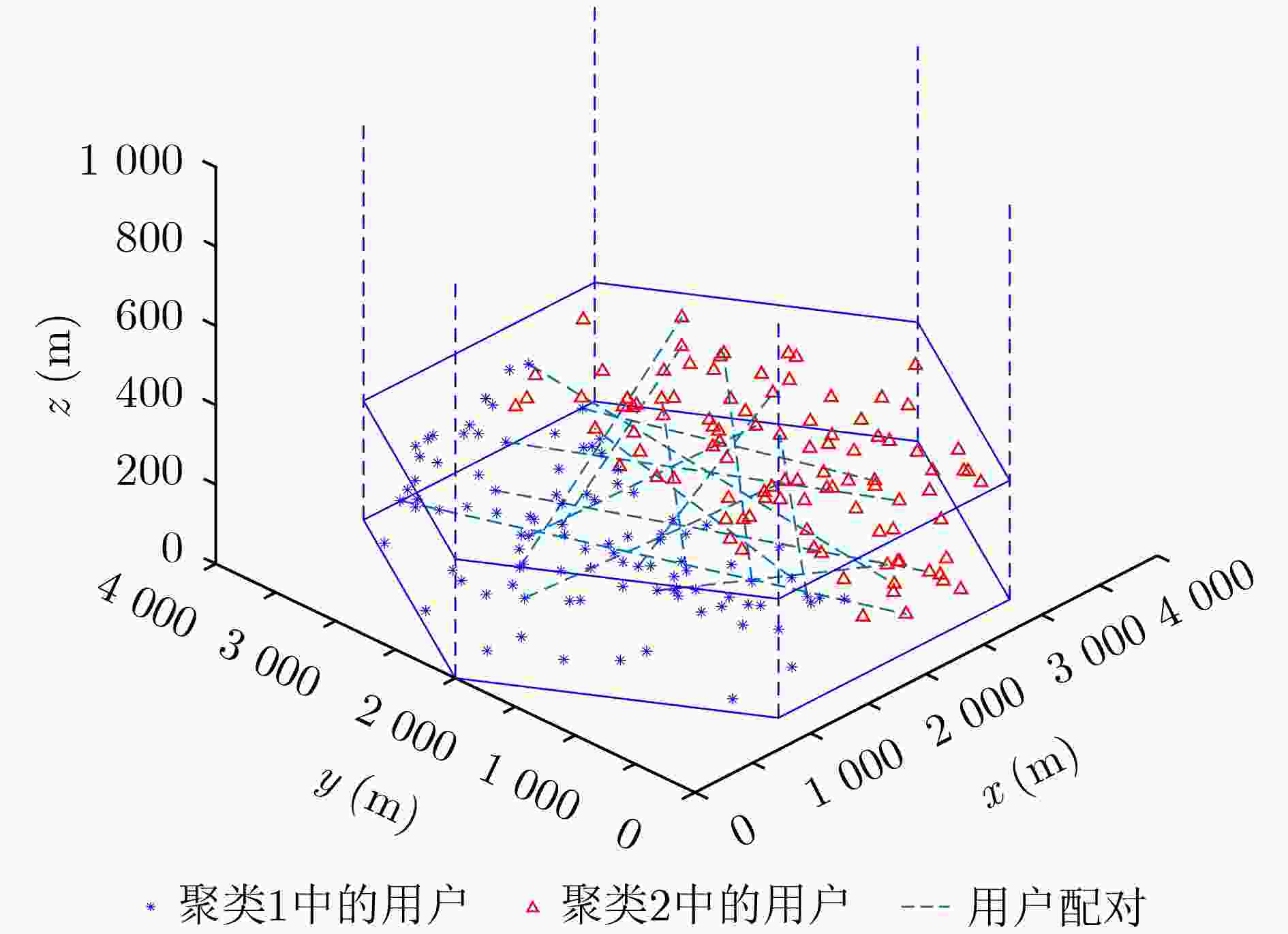

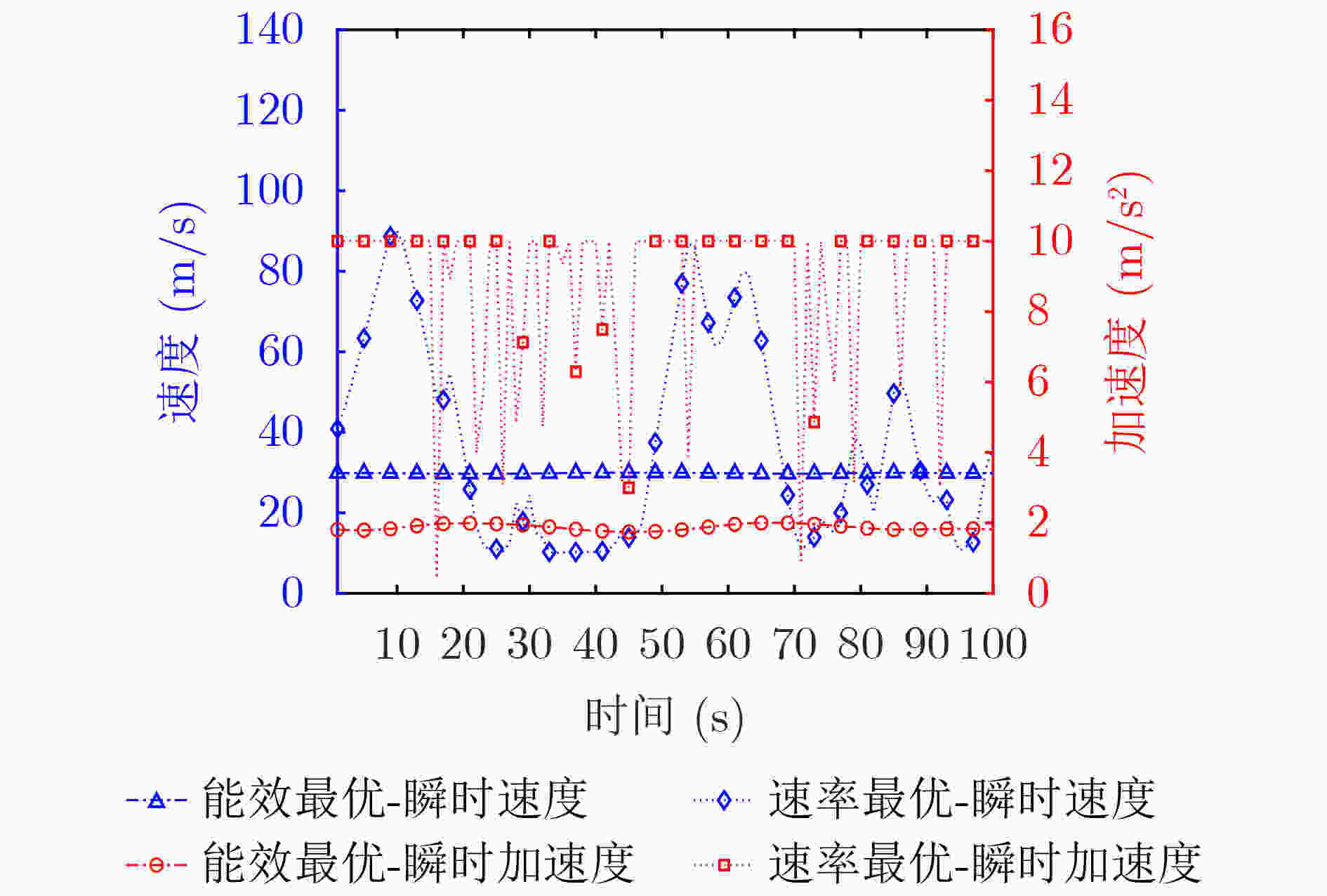
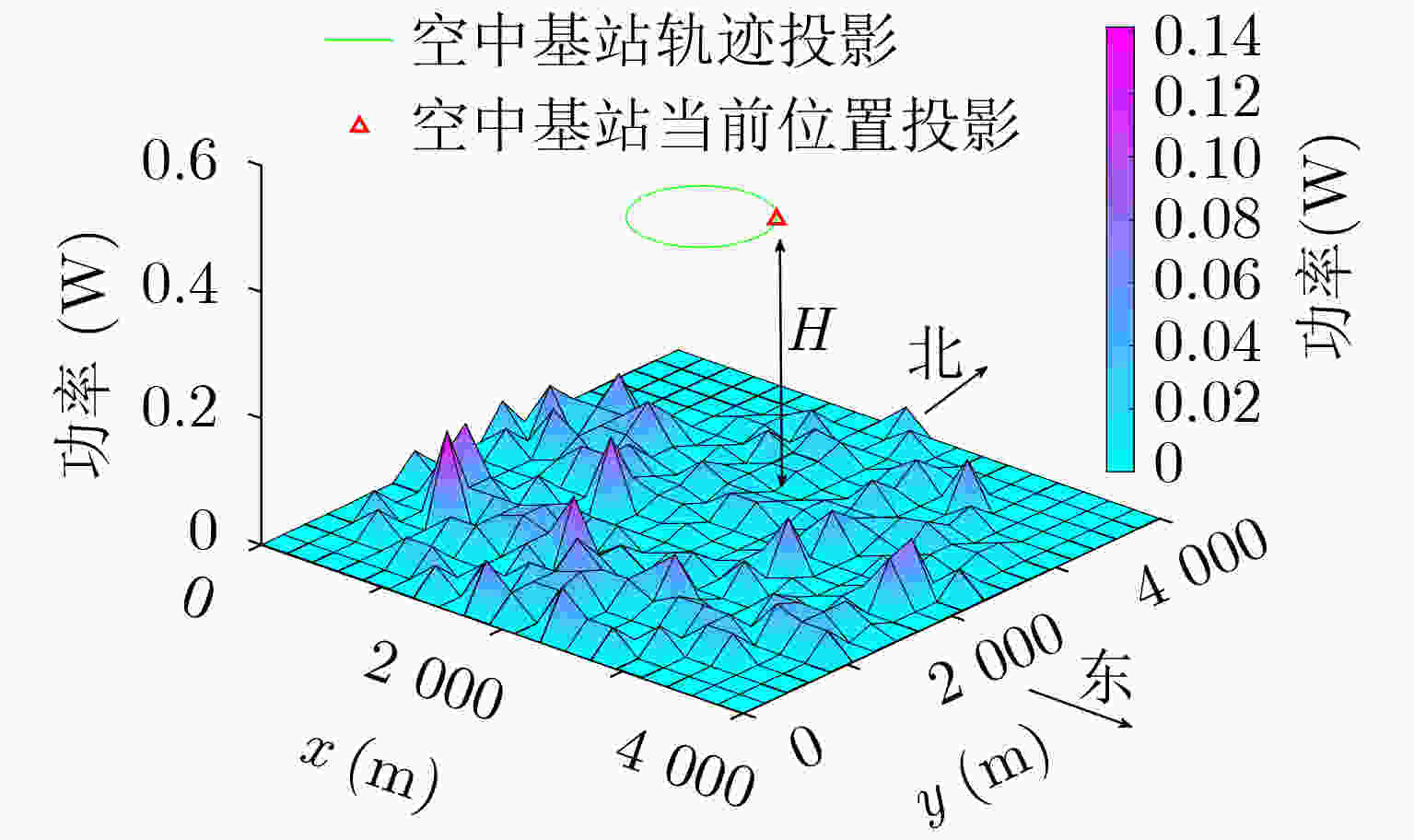
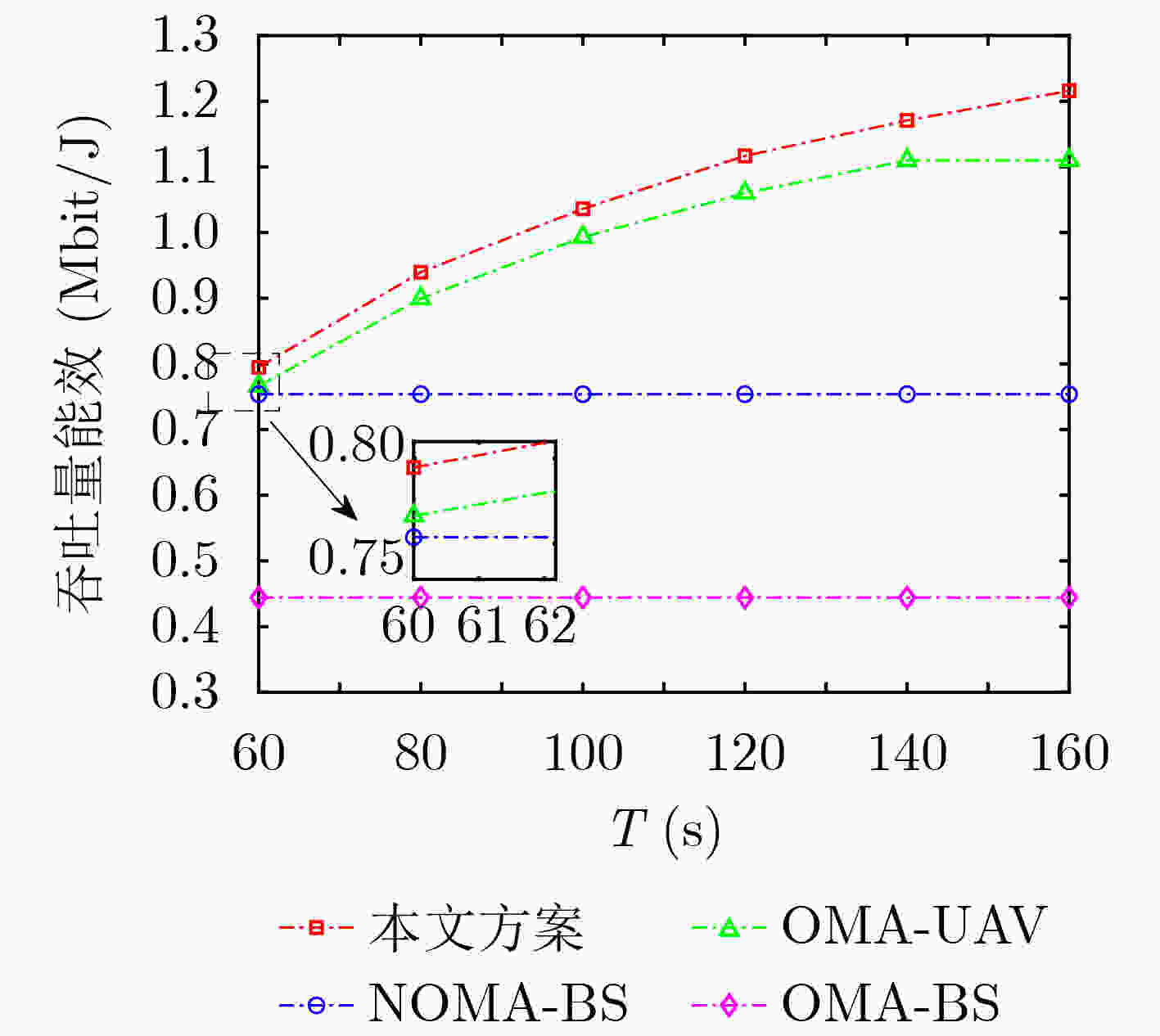


 下载:
下载:
